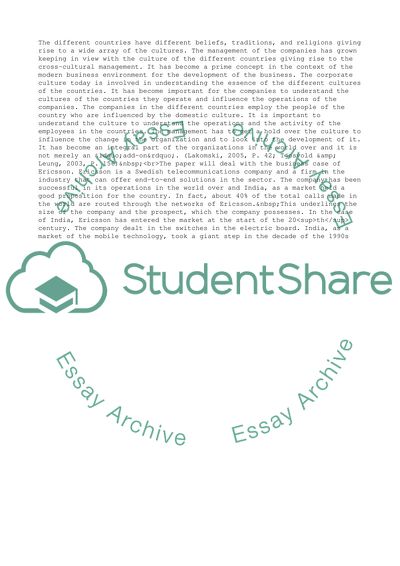Cite this document
(“Analysis of Cross Cultural Management of Ericsson Company Assignment”, n.d.)
Analysis of Cross Cultural Management of Ericsson Company Assignment. Retrieved from https://studentshare.org/management/1738060-intercultural-management
Analysis of Cross Cultural Management of Ericsson Company Assignment. Retrieved from https://studentshare.org/management/1738060-intercultural-management
(Analysis of Cross Cultural Management of Ericsson Company Assignment)
Analysis of Cross Cultural Management of Ericsson Company Assignment. https://studentshare.org/management/1738060-intercultural-management.
Analysis of Cross Cultural Management of Ericsson Company Assignment. https://studentshare.org/management/1738060-intercultural-management.
“Analysis of Cross Cultural Management of Ericsson Company Assignment”, n.d. https://studentshare.org/management/1738060-intercultural-management.


